If you’re planning a trip to West Africa, this Senegal travel guide is for you!
Senegal is by no means among Africa’s most visited countries, but it’s been making strides on the tourist scene in recent years.
In this West African nation, baobabs dot the landscape as majestic river deltas part the land.
Wildlife reserves, while not quite as impressive as their counterparts in East Africa, offer the chance to see giraffes, zebras and rhinos.
The coastline that hugs the country is characterised by its white-sand beaches, with the city of Dakar sitting on a peninsula.
While tourism in Senegal is still in its infancy, a fair few high-end hotels have opened in recent years, and it’s getting easier to travel around the country.
Here’s all you need to know!
Senegal facts
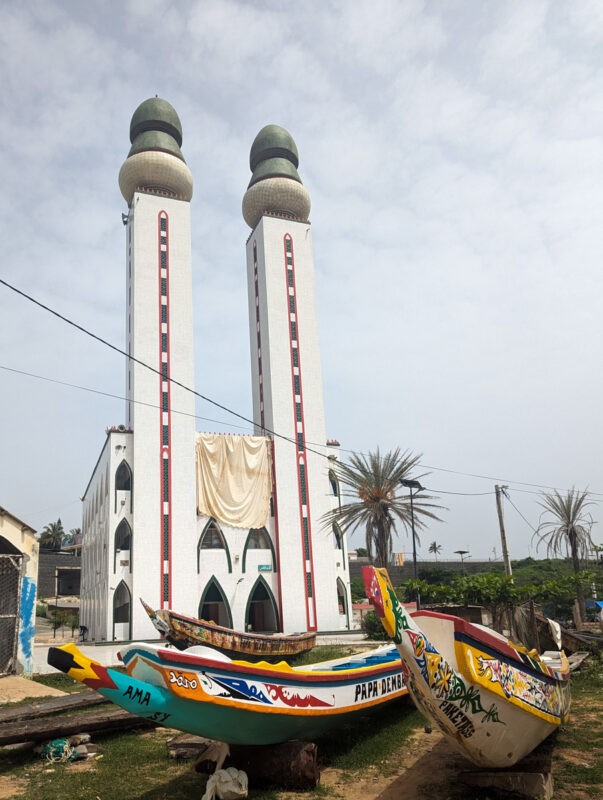
- Capital: Dakar serves as the political and cultural heart of Senegal, boasting a mix of modernity and tradition.
- Population: Approximately 17 million people call Senegal home.
- Area: Covering about 197,000 square kilometres, Senegal sprawls from the arid Sahel region in the north to lush forests in the south.
- Official Language: French is the official language. However, local languages like Wolof are widely spoken. English is increasingly spoken, but as a traveller a few words of French (or Wolof!) will help a lot.
- Currency: The West African CFA Franc is the standard currency here. You’ll find that ATMs are mostly available in larger cities and towns.
- Climate: Senegal has a tropical climate, characterized by a dry season from November to May, and a rainy season from June to October.
- Religion: About 95% of the population identify as Muslim, with most of the remainder being Christian. Most Senegalese people pride themselves on religious tolerance and harmony and the country is secular.
- Food: Senegalese food is a blend of African and French influences. The national dishes include “Thieboudienne,” a fish and rice meal, and “Yassa,” a tangy chicken dish (fish yassa is also available). It’s not the easiest place for vegetarians, but I managed it!
- Entry Requirements: Visitors from the UK, USA and a range of other countries do not need a visa for visits of fewer than 90 days. Always check your official government website (for example, Gov.uk) before travelling.
Getting to Senegal
Senegal’s Blaise Dignane International Airport has flights to various European destinations, including Paris and Lisbon, with a London charter flight in the peak tourist season.
The airport is about equidistant to Dakar and the beaches of the Petite Côte (Saly, Pointe Sarene), around an hour’s drive to each.
All of Senegal’s land borders – to Mauritania, Gambia, Guinea Bissau, Guinea and Mali – are open, although Senegal is certainly the most well-connected country in the region and some of these crossings can be rather hair-raising!
However, the Senegal/ Gambia crossing isn’t too bad – we crossed it after our trip to Senegal.
Getting around Senegal
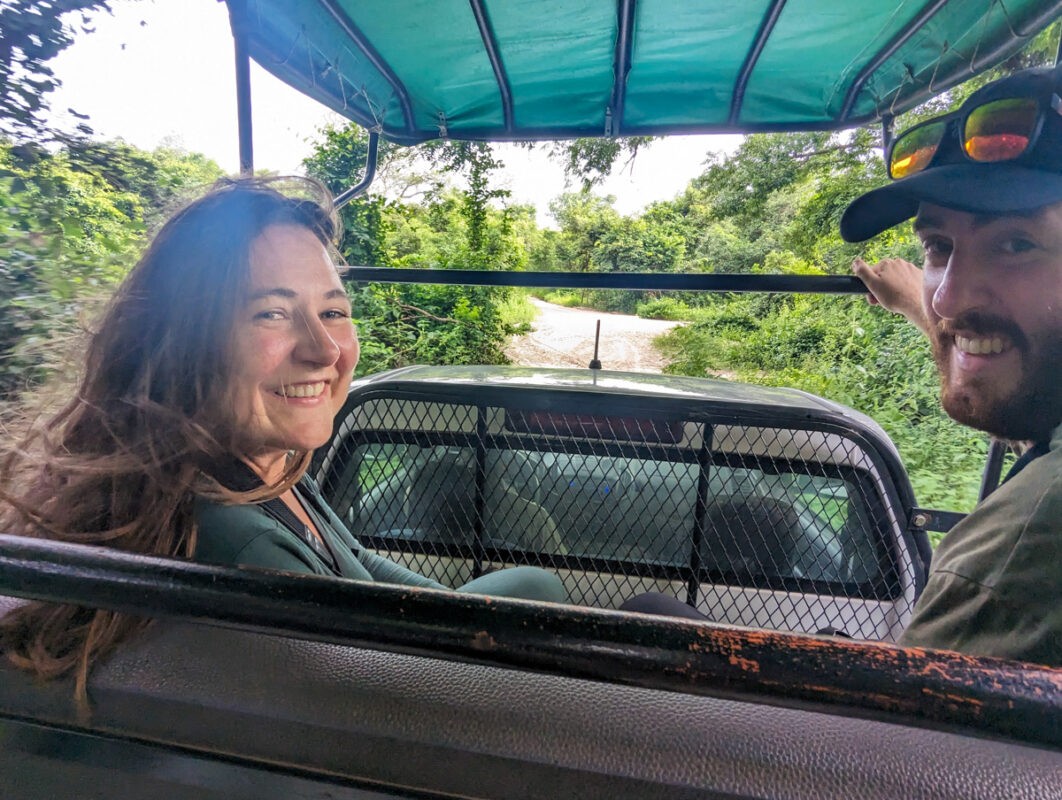
While Senegal has tonnes of things to do and wonderful places to see, I do think at the moment it’s let down a little by less than stellar transport infrastructure!
Private transport and tours
Private transfers and tours are readily available, but they are expensive – we were quoted around £200 for a day tour from Dakar to Touba (around 2 hours away).
Group tours aren’t common unless you’re booking through TUI or another accommodation provider.
Public transport in Senegal
Public transport in Senegal consists of buses and sept-places.
Dakar Dem Dikk runs buses to and from the capital, with connections to places like St Louis (in the north, near the Mauritania border) and Kaolack (a couple of hours from the Gambia border). You can book tickets via the Youmba app – full instructions in this article (coming soon!).
The buses have the potential to be great, but our 2.5-hour bus was over four hours late!
Sept-places are cars which have been converted to add extra seats in the boat. As the name translates to, the car has “seven places”; they can each accommodate seven people.
We paid 2,000 XOF for an hour-long journey in a sept-place.
These fees are fixed, so you shouldn’t be overcharged and can’t negotiate, but there is an extra, negotiable fee for baggage, which we paid 1,000 XOF for.
Places to visit in Senegal
Senegal is scattered with nature reserves and atmospheric towns and is lined by a golden coastline. Here are the best places to add to your itinerary:
Dakar
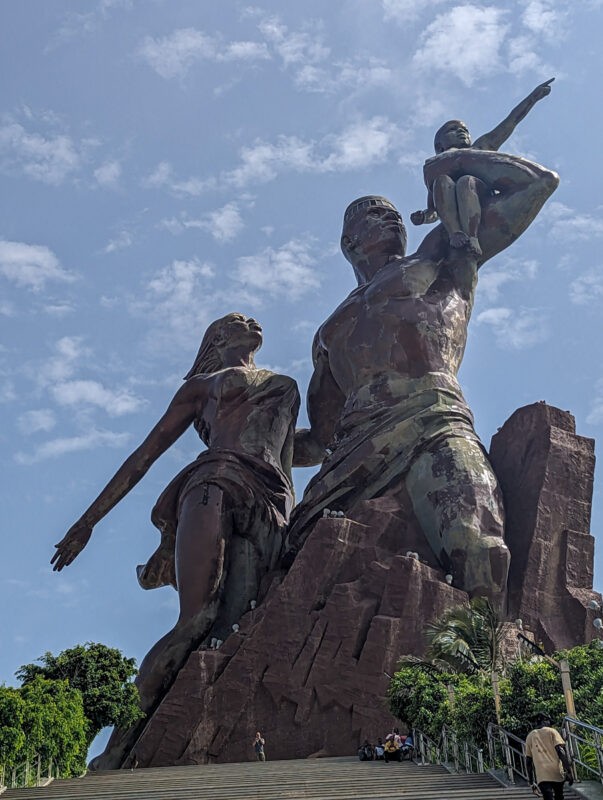
The capital of Dakar is a labyrinth of streets that weave around each other and lead to the coastline that surrounds it on nearly all sides.
It’s a hectic city, brimming with traffic and usually sweltering under the baking sun!
However, there’s plenty to do here and it’s worth spending a couple of days to take it in.
The standout spot is Goree Island, a UNESCO World Heritage Site with a sombre history; it was where slaves were imprisoned before they were transported to North America.
While it’s an emotional place to visit, I’d definitely recommend doing so to come to terms with this side of history.
Ngor Island, on the other side of Dakar, cumulates some of West Africa’s best surfing, SCUBA diving and tropical beaches leading to street art-lined beaches. Plus it’s only a 10-minute boat ride from Ngor Beach!
The African Renaissance monument is an enormous statue overlooking the bay (pictured) and is worth climbing up to.
Then there’s the Mosque of the Divinity which overlooks the sea and is right by a small fish market.
The Petite Cote
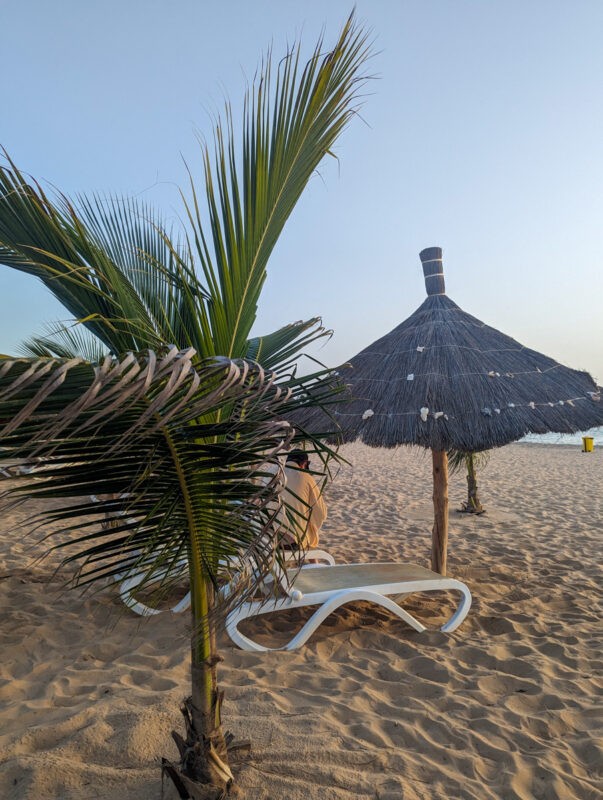
The Petite Cote is what’s helping Senegal tourism huge strides in recent times.
Pointe Sarene is a fishing village turned seaside hotspot, and Saly’s a buzzing coastal town.
Stay in a luxe hotel, grab a cool drink and toast to a beach holiday in Senegal!
St Louis
In the northwest corner of Senegal, St Louis is a city where French and African influences merge.
The streets are a showcase of colonial architecture that are now homes for local businesses.
The Senegal River bisects the city; Faidherbe Bridge is one of the best sunset spots that spans from the mainland.
Take a trip to the Parc National de la Langue de Barbarie to enjoy birdwatching; pink flamingos and pelicans call this area home.
Touba
The second-largest city in Senegal, Touba is the spiritual heartland of the Mouride Brotherhood, a significant Sufi Muslim order.
The Grand Mosque is the focal point, and while its interior is off-limits to non-Muslims, the imposing exterior warrants admiration, with resplendent minarets and intricate geometric designs.
If you’re visiting Touba, dress modestly and consider hiring a guide to fully detail the city to you.
Lompoul Desert
Easily accessible from both Dakar and St Louis, the Lompoul Desert is a slice of Saharan landscape within Senegal.
Accommodations often include staying in traditional Mauritanian tents, which offer more comfort than their exterior might suggest, with comfortable bedding and sometimes even en-suite bathrooms.
Sandboarding and camel rides are popular activities here.
And don’t forget to catch the sunset, as the waning light casts the dunes in a golden glow.
Fathala Wildlife Reserve

Probably my favourite place to visit in all of Senegal, Fathala’s a huge nature reserve encompassing bushland, 4×4 trails and mangroves.
In Fathala, giraffes, warthogs, zebras and one solitary rhino mingle, visitable on game drives.
Bush walks incorporate birdwatching, and rivers weave through the lush mangroves.
Fathala’s often visited on a day trip from the Gambia, but stay in a luxury safari tent at Fathala Wildlife Lodge.
Bandia Wildlife Reserve
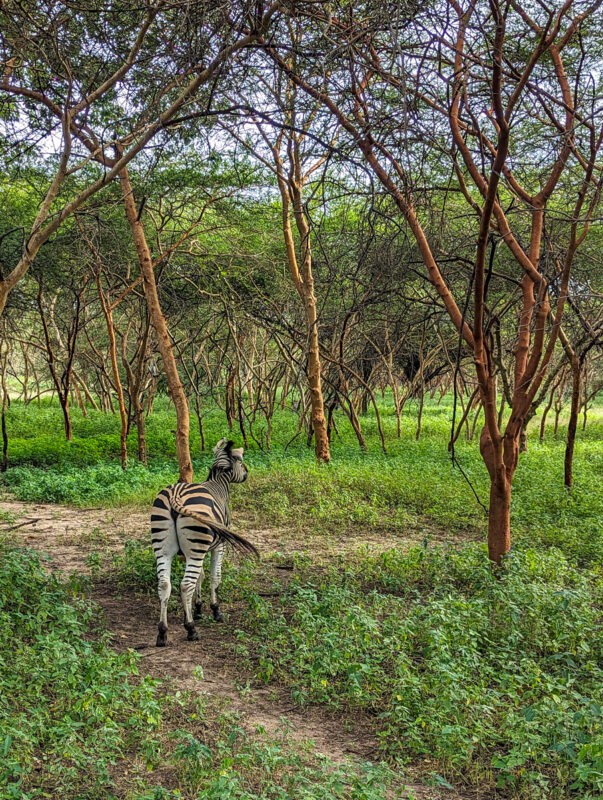
Fathala’s little sister, Bandia is equidistant to the beaches of the Petite Cote and Dakar and is a popular day trip from both.
It’s much smaller than Fathala – although this does mean that wildlife sightings are virtually guaranteed – and safaris typically take 1-2 hours.
It’s fenced in and does have a slightly zoo-like atmosphere, but you’ll see giraffes, zebra and potentially one of the only two rhinos in the park!
Saloum Delta

The lush Saloum Delta forks into the coastline of Senegal, sprawling over 180,000 hectares as rivers turn into tributaries lined by mangroves.
This national park is one of the most biodiverse areas of the country, and civilizations have prospered here for centuries thanks to its abundance of seafood and plant life.
Learn all about this in the Saloum Delta Museum in Toubakouta (French only, but the Google Translate app can handily translate entire blocks of text using your camera) and take a boat tour out on the mangroves.
Visit Shell Island – an island that’s been gradually formed by shells collecting and compounding – and Île des Oiseaux, where at sunset you’ll see an array of colourful bird life.
If you’re staying in Toubakouta you can arrange boat trips with your hotel, but you’ll be able to get it cheaper by heading down to the pier and seeing if a local fisherman can take you.
If you want to pre-arrange something, I have the WhatsApp contact of the guy who took us – just drop me an email ([email protected]) if you’d like it.
He knows a few words of English but we spoke mainly in (poor, on my side) French – but he is super enthusiastic, so if you can speak a little French or are okay with speaking through Google Translate/ body language he’ll be happy to take you!
Best hotels in Senegal
There are some excellent hotels in Senegal, both five-star resorts and some more local resorts. Here are some that we stayed at to consider when you visit:
Hotel RIU Baobab, Pointe Sarene
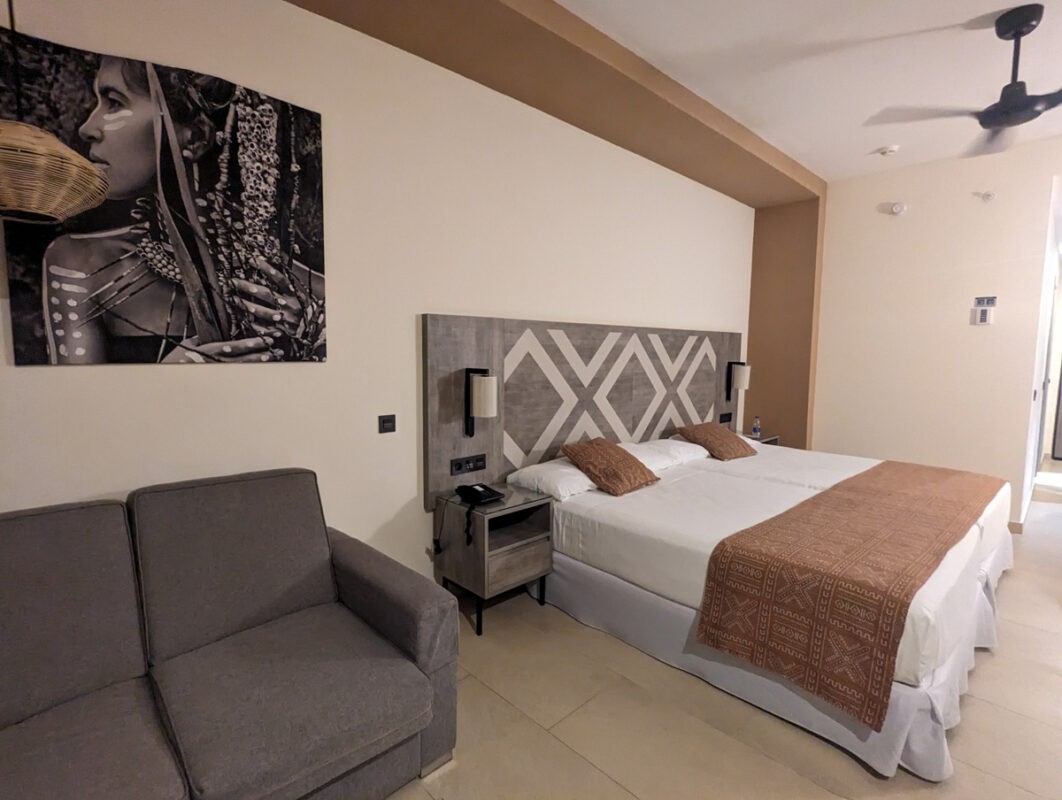
The Hotel RIU Baobab opened in 2022; it’s a deluxe property with multiple pools, a waterpark, three restaurants, a buffet, a pool bar and a private beach.
The airy lobby is kitted out with plants and home to squashy sofas, and the luxurious rooms have African artwork, a spacious seating area and a super comfy bed.
We spent four nights here and it was among the best resort hotels I’ve been to.
Check out Hotel RIU Baobab by clicking here.
Fathala Wildlife Reserve and Lodge, Fathala
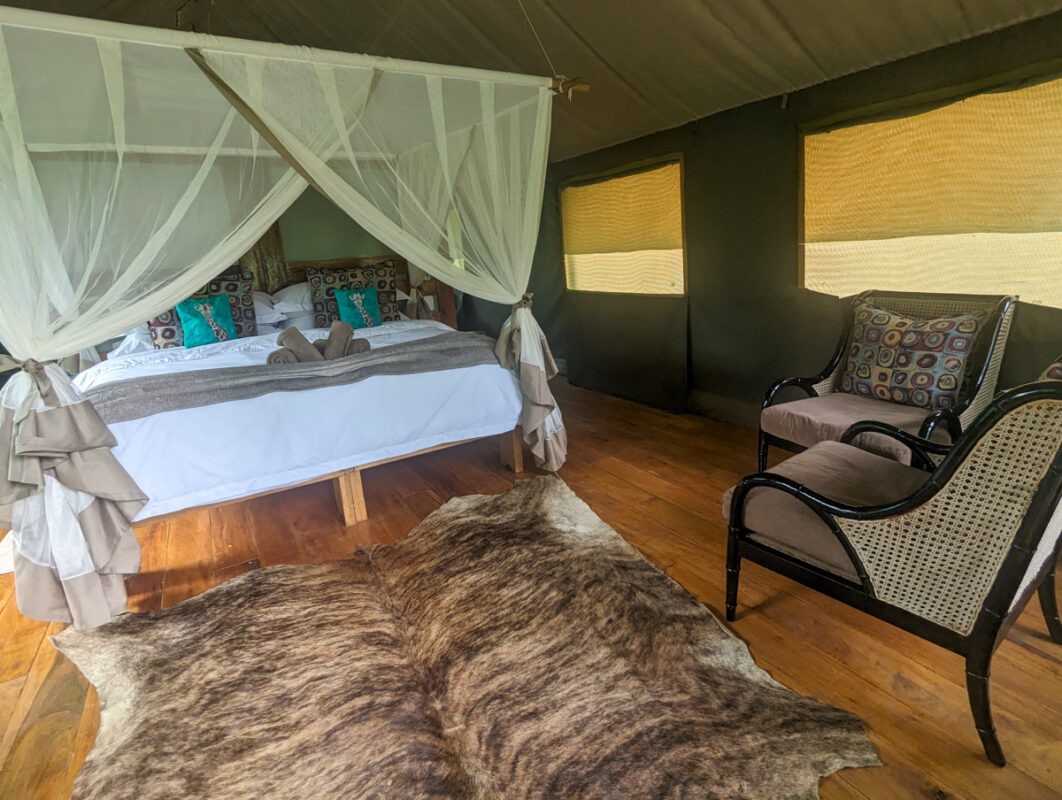
Fathala Wildlife Reserve sees plenty of day trippers from Gambia each day, but if you have the time, I’d definitely recommend staying here for a little longer.
The lodge boasts stunning safari tents with four poster beds, baths and outdoor showers.
The aircon works fantastically (you won’t even notice you’re in a tent!) and there’s no better experience than sitting outside your tent with a cup of coffee, listening to the birds waking up around you.
There’s a small swimming pool which is overlooked by a restaurant, where you’ll enjoy top-quality food for breakfast, lunch and dinner.
Check out Fathala Wildlife Reserve and Lodge by clicking here.
Cabane du Pêcheur, Dakar
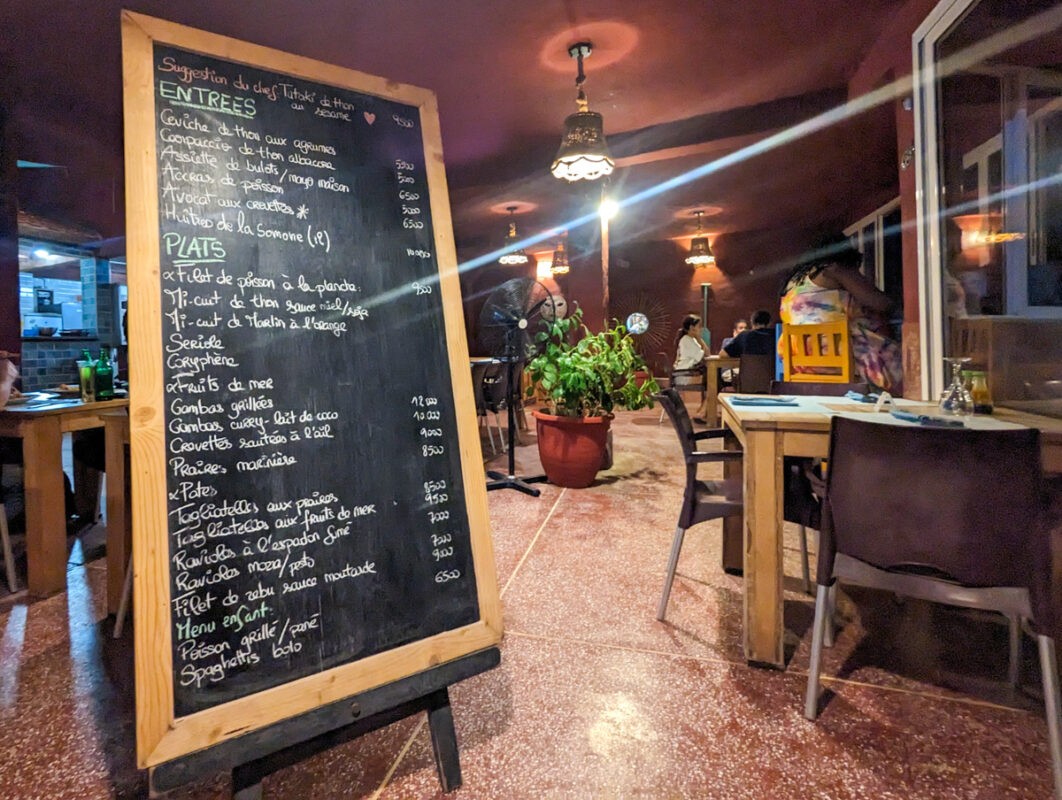
Another great place we stayed at in Senegal – although it was slightly different to the others – was Cabane du Pêcheur in Ngor Beach, Dakar.
Translating to the “house of the fisherman”, this lodge has comfy rooms with mosquito nets and leads out to a fish restaurant which overlooks the sea.
The restaurant’s a little expensive, but the food is good – I don’t even eat fish but I adored the pesto and mozzarella ravioli.
Check out Cabane du Pêcheur by clicking here.
Health and safety tips for Senegal
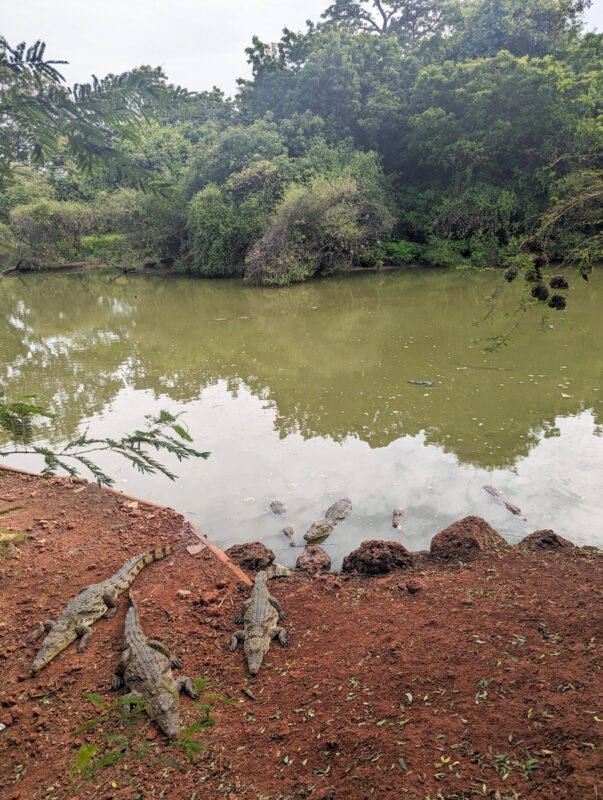
I’m covering this in full in my article is Senegal safe?, but here are a few pointers.
Senegal is generally a safe country, although there are the occasional protests which can turn violent. As a tourist, it’s fairly easy to avoid these.
Pickpocketing can happen, particularly in downtown Dakar.
There is quite a lot of poverty in Senegal, and many people are living day to day, trying to get by. I didn’t actually encounter much begging, but found a lot of people wanted to sell me things (souvenirs, tours, etc).
It’s totally understandable, and I supported small local businesses where possible, but obviously, I couldn’t buy things from everyone. Sometimes, you do have to be firm.
Don’t drink the tap water and be careful with food hygiene – after a few bouts of traveller’s diarrhoea in the past, I avoided salads in most places in Senegal and was very careful with not consuming any water, which generally meant I avoided too many gastro issues.
Speak to your doctor before travelling about any necessary vaccinations you might need.
I’d recommend taking malaria tablets, especially if you’re travelling close to the wet season or travelling to any inland regions (including Fathala or the Saloum Delta).
Senegal is aiming to stamp out malaria by 2030, and there are less cases nowadays than there used to be, BUT every local who I spoke to had had malaria multiple times.
What to wear in Senegal

Most of the year, Senegal’s hot – but it’s also a fairly conservative country.
95% of the population is Muslim, but traditional attire is a bit different to North Africa and the Middle East.
Some women cover up, whereas others wear short or even strappy sleeves. I didn’t see many Senegalese women wearing short skirts or shorts.
If you’re by the pool or on the beach, shorts and strappy tops (and even swimwear) are fine, but personally I wouldn’t wear anything too revealing in other places (some tourists do though).
Do also bear in mind that one of the best ways to avoid mozzie bites (and subsequently mosquito related diseases) is to wear long clothes. Bearing this in mind, I tried to completely cover my arms and legs every evening and when I was in wooded areas.
When to visit Senegal
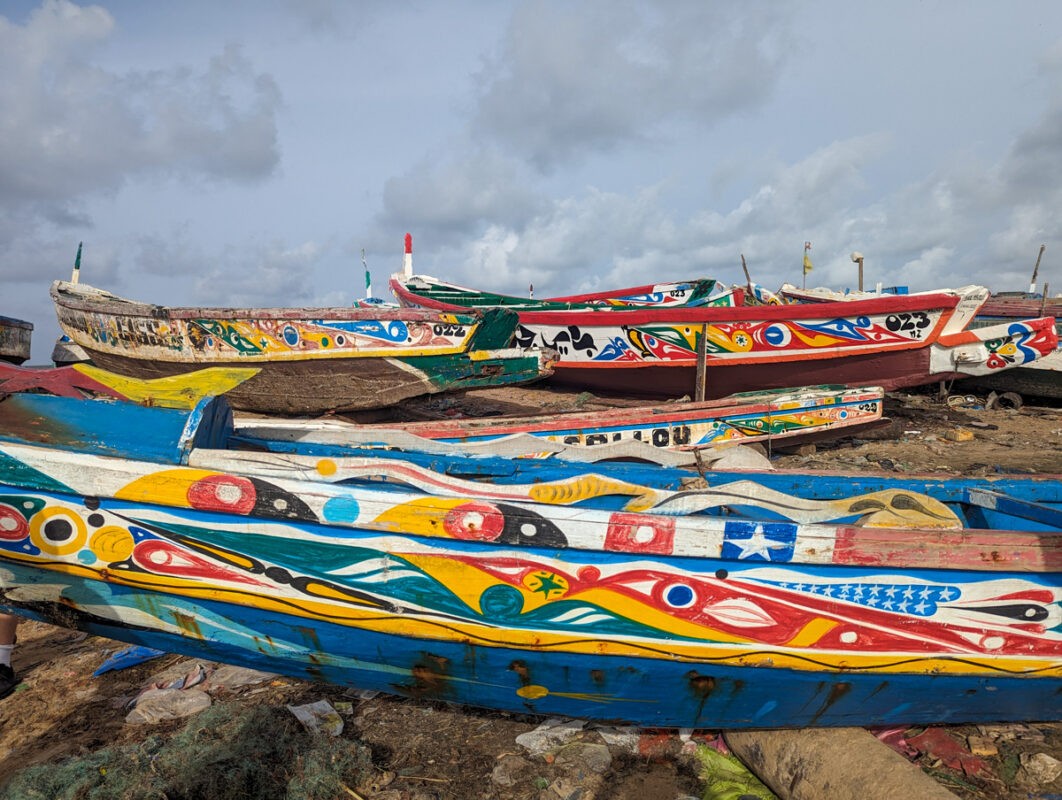
I’d recommend visiting during Senegal’s dry season, from November to May. We visited in October and while it didn’t rain much, it was still incredibly hot.
Temperatures from November to May are much more moderate, usually ranging between 75-85°F (24-29°C).
Christmas and New Year’s are among the most popular times, but don’t expect Senegal to be overrun with tourists; it’s generally fairly easy to move around and find accommodations (although I’d always recommend booking at least a day or two in advance, more if you want to stay somewhere specific).
I wouldn’t recommend visiting during the wet season – it brings increased humidity and a heightened risk of malaria and mosquitos.
If you do travel during these months, be extra cautious with mosquito protection.
Cost of travel in Senegal
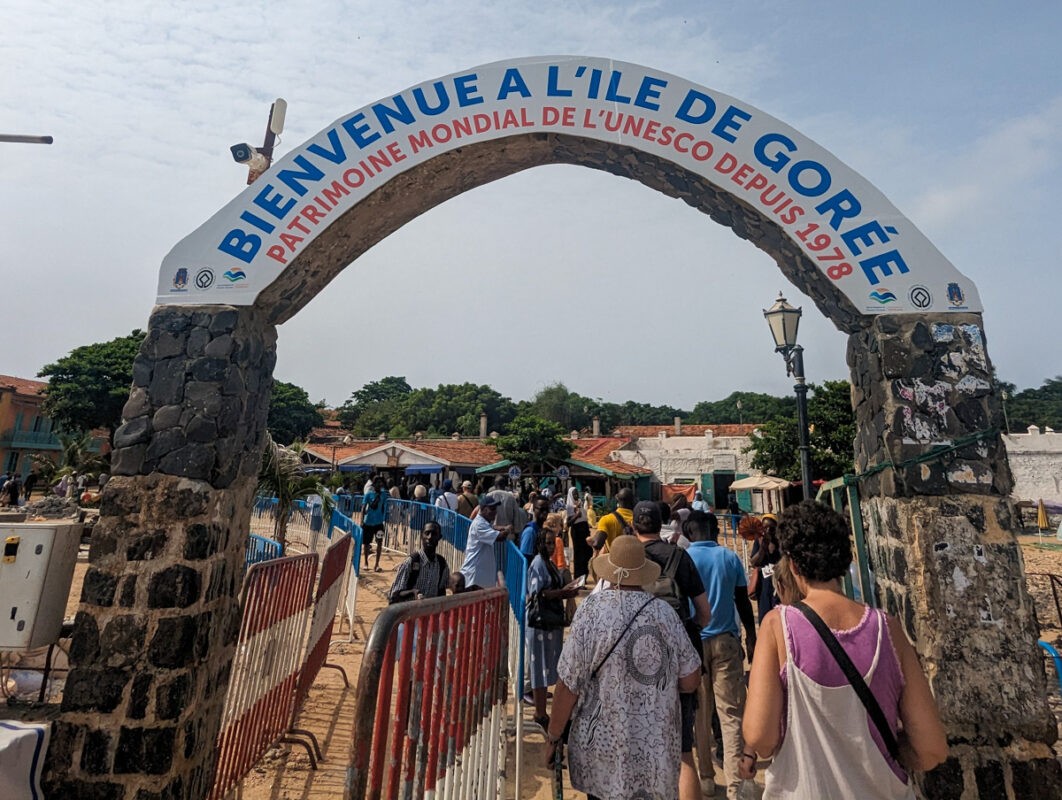
Like many African countries, Senegal isn’t particularly cheap for tourists (I found Gambia to be much more cost-efficient). But some things are still budget-friendly!
Some guesthouses are as low as $20-$30 per night, but these do vary in quality.
Mid-range and luxury hotels range from $50 to well over $200 for high-end properties.
Senegal doesn’t have much in the way of street food, but you can often pick up its famous fish and rice dish Thieboudienne in small restaurants – often costing as little as $2 (although you may be charged a more expensive tourist price).
Sit-down restaurants, particularly in Dakar, can range from $5 for a basic meal to $30 or more.
Add $1-$3 for a bottle of Gazelle, the local beer, or perhaps a glass of bissap, a local hibiscus drink.
Transport also ranges hugely.
Local buses and shared taxis are the most pocket-friendly, usually costing less than $5-10 for journeys of 2-4 hours.
I’d recommend using the Yango app in Dakar for flat-rate taxis (it works like Uber but you’ll need to pay in cash).
Tours often come at a premium. A day trip to Gorée Island, including the ferry and museum entry and with a guide and lunch, can cost up to $70 (you can definitely DIY for cheaper!).
Bandia wildlife reserve costs from around $20.
If you shop for souvenirs, be prepared to haggle. We were originally quoted $40 for a tiny wooden giraffe statue, and eventually paid $10 – then saw similar ones on sale in a shop for $5.
While I try not to haggle too much over small amounts, some of the quoted prices were quite wild!
SIM cards with data packages are affordable, costing around $10 for 15GB of data. You could also use Airlo e-sim cards; these can be activated as soon as you enter the country, but they’re much more expensive than physical sim cards.
Cash is king in most of Senegal, apart from some hotels (but usually not small local guesthouses).
ATMs are readily available in the cities and accept foreign cards.
Do bring some cash to exchange when you’re there – I’d recommend Euro rather than USD because it has better exchange rates and more places change it (presumably due to the French tourist market, which is by far the biggest).
How to plan a trip to Senegal!
I hope that this article helped you plan your trip to the West African nation! I’ll be talking much more about both Senegal and The Gambia, so do check back. Plus, check out my Instagram page to see more posts from Senegal.

